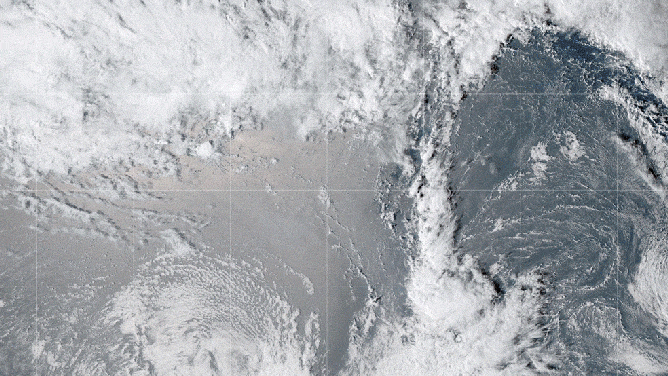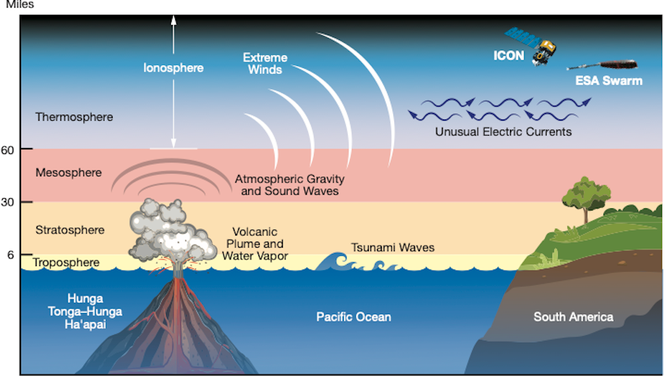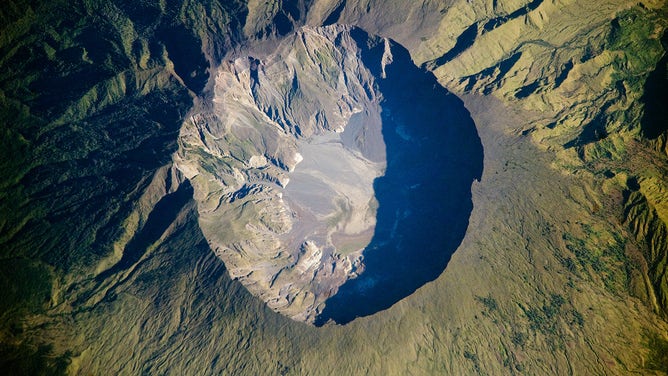How the Tonga volcano eruption could have warmed the planet, study says
Typically, eruptions have a cooling effect as they release sulfur dioxide into the atmosphere. For example, the largest eruption on record released enough sulfur dioxide to cool the global climate by 3 degrees Celsius, according to volcanologist Clive Oppenheimer.
2022 volcanic eruption in Tonga affected climate around the world, study says
Professor of marine geosciences at the University of Miami Sam Purkis joined FOX Weather to explain how volcanic eruptions can have a major effect on climates around the world.
NUKU’ALOFA, Tonga – The January 2022 eruption of Hunga Tonga-Hunga Ha'apai in the island nation of Tonga was so powerful that it may have caused the climate to warm temporarily, a study says.
Located in the southern Pacific Ocean, the underwater volcano exploded with a Volcanic Explosivity Index of 5 out of a logarithmic scale measuring up to 8.

Map showing the location of Hunga Tonga-Hunga Ha'apai in Tonga.
(FOX Weather / FOX Weather)
It produced a sonic boom that could be heard as far north as Alaska and sent a tsunami that raced across the Pacific to Japan and North and South America, according to NOAA.
SHOCKWAVE FROM TONGA VOLCANIC ERUPTION CROSSES US NEARLY 6,000 MILES AWAY
"It was an absolutely huge eruption," said Sam Purkis, marine geosciences professor at the University of Miami, who was not part of the study. "It contends probably for the largest natural explosion on the planet for more than a century."

The GOES-17 satellite captured images of an umbrella cloud generated by the underwater eruption of the Hunga Tonga-Hunga Ha’apai volcano on Jan. 15, 2022. Crescent-shaped bow shock waves and numerous lighting strikes are also visible.
(NASA Earth Observatory image by Joshua Stevens using GOES imagery courtesy of NOAA and NESDIS / NASA)
According to Purkis, the impact of the eruption not only extended around the planet but also up through the atmosphere.
He said the submarine volcano erupted powerfully enough to send water vapor into the stratosphere, a layer in the atmosphere that begins about 7 miles above the Earth’s surface.

The Hunga Tonga-Hunga Ha’apai eruption on Jan. 15, 2022, caused many effects, some illustrated here, that were felt around the world and even into space. Some of those effects, like extreme winds and unusual electric currents were picked up by NASA’s ICON mission and ESA’s (the European Space Agency) Swarm. Image not to scale.
(NASA’s Goddard Space Flight Center / Mary Pat Hrybyk-Keith / FOX Weather)
This water vapor became a potent greenhouse gas, causing a temporary warming localized to the Pacific area, Purkis said.
Large volcanic eruptions are known for making significant impacts on the weather and climate.
Unlike the eruption that occurred in Tonga, however, many others caused the climate to cool. This is because volcanoes typically emit sulfur dioxide into the atmosphere, which results in a cooling effect, according to Purkis.

FILE: Eruption of Mount St. Helens in 1980.
(John Barr / Liaison / Getty Images)
One example is the eruption of Indonesia’s Mount Tambora in 1814. Measuring at a VEI of 7, it is known as the largest volcanic eruption on record.
The volcano released an estimated 30 to 60 million tons of sulfur dioxide gas into the stratosphere, according to University of Cambridge volcanologist and filmmaker Clive Oppenheimer.

FILE: Mount Tambora, photographed from the International Space Station.
(ISS/NASA)
At that altitude, the gas formed into minuscule particles that created a veil of dust around the globe. This veil reflected enough sunlight to cool the global climate by about 3 degrees Celsius, Oppenheimer said.
"Perhaps the biggest perturbation to climate was in 1816, and this became popularly known as the ‘Year without a Summer,'" he noted.
